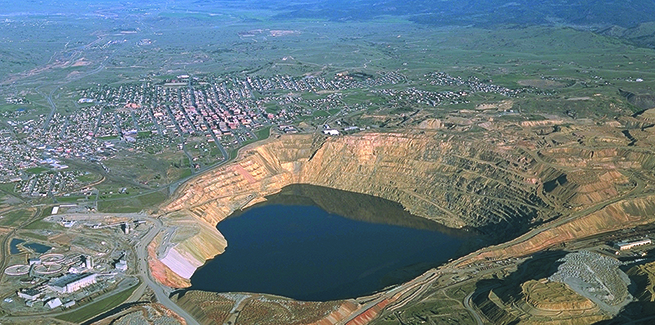There is an ongoing political battle happening in Montana between conservationists and the mining industry. A group called “Yes for Responsible Mining” is currently gathering signatures for Initiative 186, which they hope to get on this November’s ballot. The initiative would require the state’s Department of Environmental Quality to deny permits for new mines unless the mining companies provide “clear and convincing evidence” that mining operations will not pollute water sources in a way that requires “perpetual treatment” (you can read the full and brief text of the initiative here). This follows the even more aggressive Initiative 12 that some say might have killed multiple mining companies and around 500 jobs, and was shelved after an initial uproar in Southwestern Montana.
But I-186 is accused of being a sneakier way of producing the same outcome. The language of this initiative is extremely vague, as it leaves it entirely up to the Department of Environmental Quality to determine what “clear and convincing evidence” might entail. Montana mining industry representatives say this is intentional, and is designed to cause an endless wave of lawsuits that would arise when a mine does get approved, and to “spook” mining companies into investing in other states.
Mining (copper in particular) of course has a long history as a pillar of the Montana economy, though it has significantly declined in importance in large part due to recognition on its environmental effects. To get to the valuable metal deposits, a large amount of earth must first be removed and discarded (the most famous Montana example being the Berkeley pit in Butte). This waste rock still contains trace amounts of copper and all kinds of other contaminants, including arsenic, that seep into agricultural land and water supplies. As Jared Diamond writes in Collapse (which has a whole chapter on Montana’s environmental and economic history that I highly recommend reading), this problem was recognized more than a century ago when Butte ranchers noticed their livestock dying off and sued the Anaconda copper company.
Mining regulations have hampered the industry ever since. Many formerly profitable methods are now banned. Mining companies must pay cleaning and reclamation costs, and also buy a bond from a separate company that pledges to cover cleanup costs if the mining company goes bankrupt. Metal mining activity has fallen sharply in Montana as a result, even nearly disappearing entirely around the turn of the century, though the furious rally in copper prices beginning in the 2000s has salvaged the local industry.
This post is not intended to favor or oppose mining regulation. I do think that I-186 would benefit (both in its value and its prospects at the ballot box in November) from more clarity about its intended aims. But cost-benefit analyses of mining regulations in general are extremely difficult to perform because the environmental impacts are numerous and hard to measure. Surely many regulations have been beneficial to society while others have been more frivolous. But the tension between mining companies and conservationists will exist for as long the world requires raw metal-that is, for a very long time yet!

